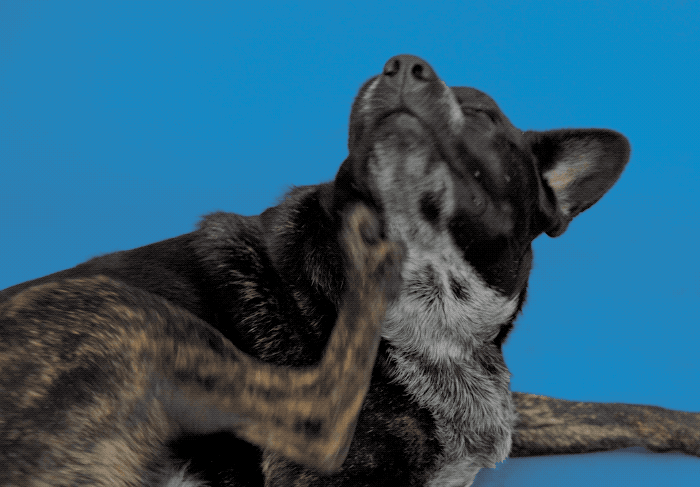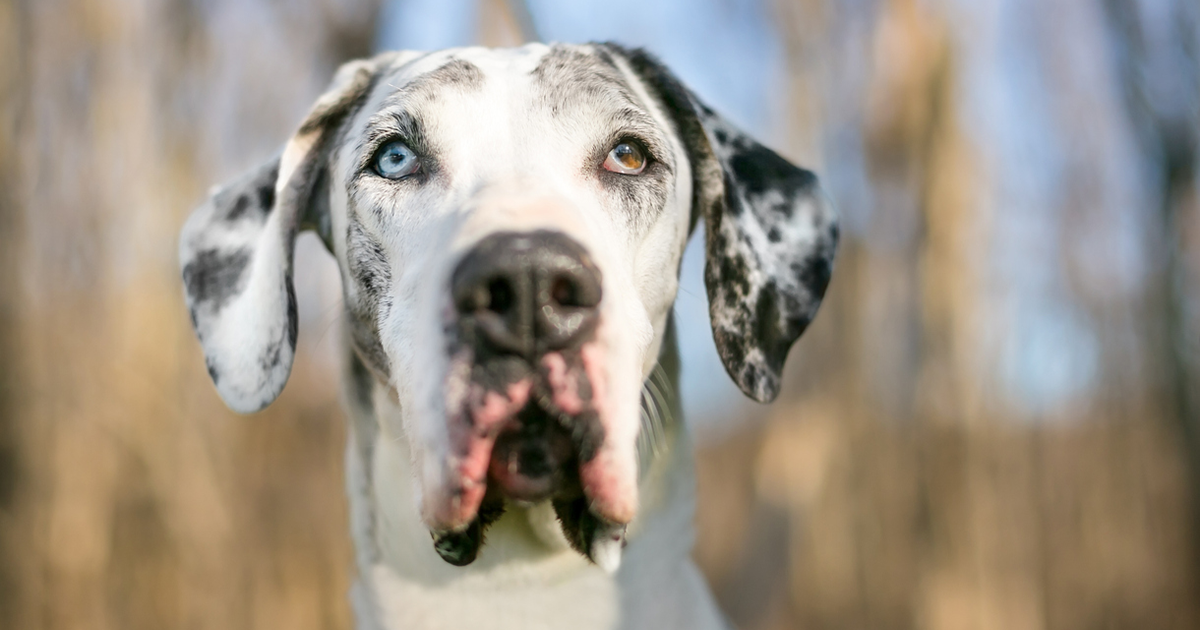You’ve heard the expression, “mangy mutt,” but what exactly does mangy mean? Well, mange is a general term for skin diseases caused by mites. According to the ASPCA, some skin mites are normal for dogs, while others cause mange symptoms such as intense itching, hair loss, and damaged skin.


There are two major species of mites that most commonly cause problems in dogs: Demodectic mange (Demodex Canis) and Sarcoptes scabiei, commonly known as Scabies.
What is Demodectic Mange?
Veterinarians believe all dogs have at least a few Demodectic mange mites (Demodex canis) on their skin, but most are healthy enough to avoid an infestation. Dogs that develop an overgrowth of mites tend to be vulnerable in some way. For example, newborn puppies and dogs deprived of proper nutrition lack the immune defenses needed to keep the mites at bay.
While it is not a hereditary condition, mama dogs often pass Demodex on to their pups in the first few days after birth. This can happen even if mom appears healthy and does not have a Demodex infestation herself.
Demodex comes in two forms: localized and generalized.
Localized Demodectic Mange occurs when mites infect one area creating a polka-dot look from bald spots. According to the ASPCA, approximately 90 percent of these cases get better without treatment.
Generalized Demodectic Mange is the complete opposite from localized mange. It affects more of the dog’s skin. This form comes with bacterial infections and hints toward an immune system that isn’t working properly due to hereditary or endocrine issues.


Although Demodex can take a very long time to heal, it is unlikely to transfer to healthy dogs, let alone humans or non-canine pets.
Demodectic Mange Symptoms
Signs of Demodex include:
- Itching
- Hair Loss
- Thickened Skin
- Scabbing
- Odor
- Bacterial infections
What is Sarcoptic Mange?
Sarcoptic mange (Sarcoptes scabiei) is caused by oval-shaped, light brown mites so small they can only be seen with a microscope. While Scabies prefer dogs, the mites are potentially contagious to people. Like Demodex, Scabies symptoms may include patchy hair loss and secondary skin infections. However, dogs with Scabies tend to be far more itchy.
Sarcoptic Mange Symptoms
Scabies symptoms tend to appear a week after exposure, and include:
- Constant, Intense Itching
- Red, Inflamed Skin
- Sores & Scabs
- Hairloss
Sarcoptic mange is contagious among dogs and humans. If you suspect your dog has mange, isolate them from other people and pets and schedule an appointment with your vet.
Should you or any of your hooman family members develop an itchy, bumpy rash, visit the people doctor pronto!
[bp_related_article]
How Is Mange Treated?
If your dog is displaying mange symptoms, schedule an appointment with your vet. He or she will perform a physical exam and take a scraping of skin to determine if your dog has mites. While Scabies can be difficult to spot on a skin scrape, Demodex is often diagnosed this way. When suspicious of Scabies, most vets simply begin treatment and monitor the dog for improvement.
Depending on the type of mange and your dog’s breed, topical, oral or injectable medications are prescribed. Medicated shampoos and dips are also common.


To prevent irritating mange symptoms from coming back, keep your dog happy and healthy. Regular veterinary care, exercise and proper nutrition help promote a strong immune system so your dog can fight off an infestation.
If your dog has had sarcoptic mange, replace everything from their collars to their bedding. Make sure to go in for bi-weekly skin scrapes to determine there is no evidence of mites.
For more, check out these articles!
Why Is My Dog’s Skin Dry And Itchy?
7 Reasons Why Grooming Your Dog At Home Can Make You Your Vet’s Favorite Patient






